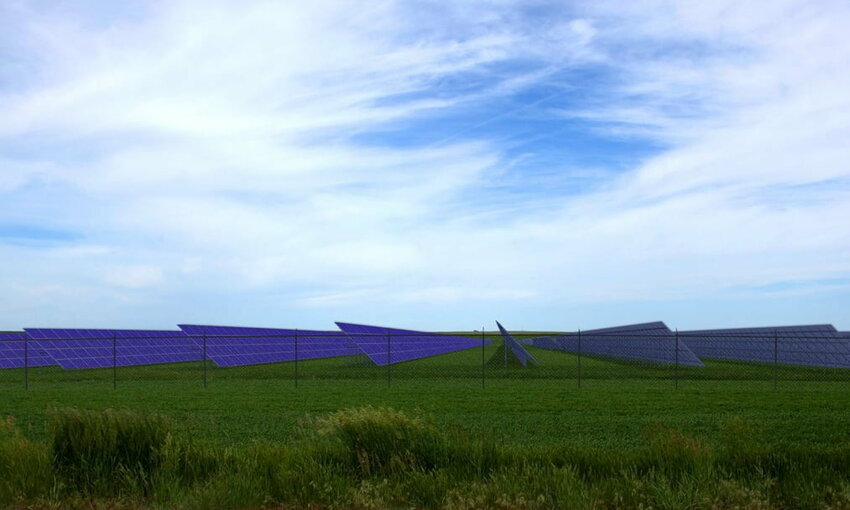 (Photo Credit: Bullfrog Power)
(Photo Credit: Bullfrog Power)Royal Bank of Canada (RBC) said that the financial institution became the first Canadian bank to sign a long-term power purchase agreement for renewable energy. The deal is expected to provide 39 megawatts from two solar farms under construction in Alberta.
The two utility-scale solar farms are being developed in the County of Forty Mile, Alberta, across 300 acres, according to RBC. One will be 19 MW and the other 20 MW, producing around 80,000 MWh of renewable energy for Alberta’s general electricity grid annually.
RBC signed the PPA with Canadian renewable energy retailer Bullfrog Power and Calgary-based renewable energy company BluEarth Renewables. In 2005, RBC signed on as Bullfrog Power’s first major corporate renewable energy purchaser, the companies said. Since then, the bank has purchased nearly 200,000 MWh of renewable energy from Bullfrog Power.
“In mid-2019, the two organizations formed a buyers’ partnership — an emerging strategy in corporate PPAs where companies partner to gain access to larger projects, benefiting from economies of scale and sharing in the costs of executing these agreements,” according to the partners.
Meanwhile, BluEarth Renewables and the bank initially linked up in 2014 when RBC participated in the financing for one of the company’s projects. RBC Capital Markets was BluEarth’s financial advisor on two acquisitions, and arranged and syndicated bank financing to complete those acquisitions, the bank noted.
Scott Foster, SVP, global head of corporate real estate at RBC, said that the deal supports the low-carbon transition for the bank’s clients and communities. Power purchased from the new solar farms in Alberta should directly support the bank’s climate plan to reduce absolute greenhouse gas emissions from its operations by 70% by 2025, and increase sourcing of renewable and non-emitting electricity to 100% by 2025.
“The RBC Climate Blueprint is the bank’s enterprise climate change strategy to accelerate clean economic growth and support our clients in the transition to a low-carbon economy,” RBC said. “Commitments of the strategy include investing in technology to address complex environmental challenges, advancing climate risk management, and providing $100 billion in sustainable financing by 2025.”
Investment in renewable energy projects marks a new approach for RBC. In 2011, Reuters reported that the Royal Bank of Canada was “one of the world’s biggest financiers of Canadian oil sands,” which had long drawn criticism from environmental and indigenous groups. That year, the bank “expanded its environmental policy to give more say to indigenous peoples when considering underwriting mining projects and pipelines blamed for polluting their lands,” according to Reuters.
More recently, the nonprofit Shareholder Association for Research and Education (SHARE) highlighted the role that banks could play in the transition to a low-carbon economy.
“In Canada, climate change is rapidly becoming a priority issue for banks,” Shannon Rohan, director of responsible investment for SHARE in Canada, said in 2018. “Recently, we have seen some promising developments such as RBC setting out clear position statements on the importance of climate to its business.”